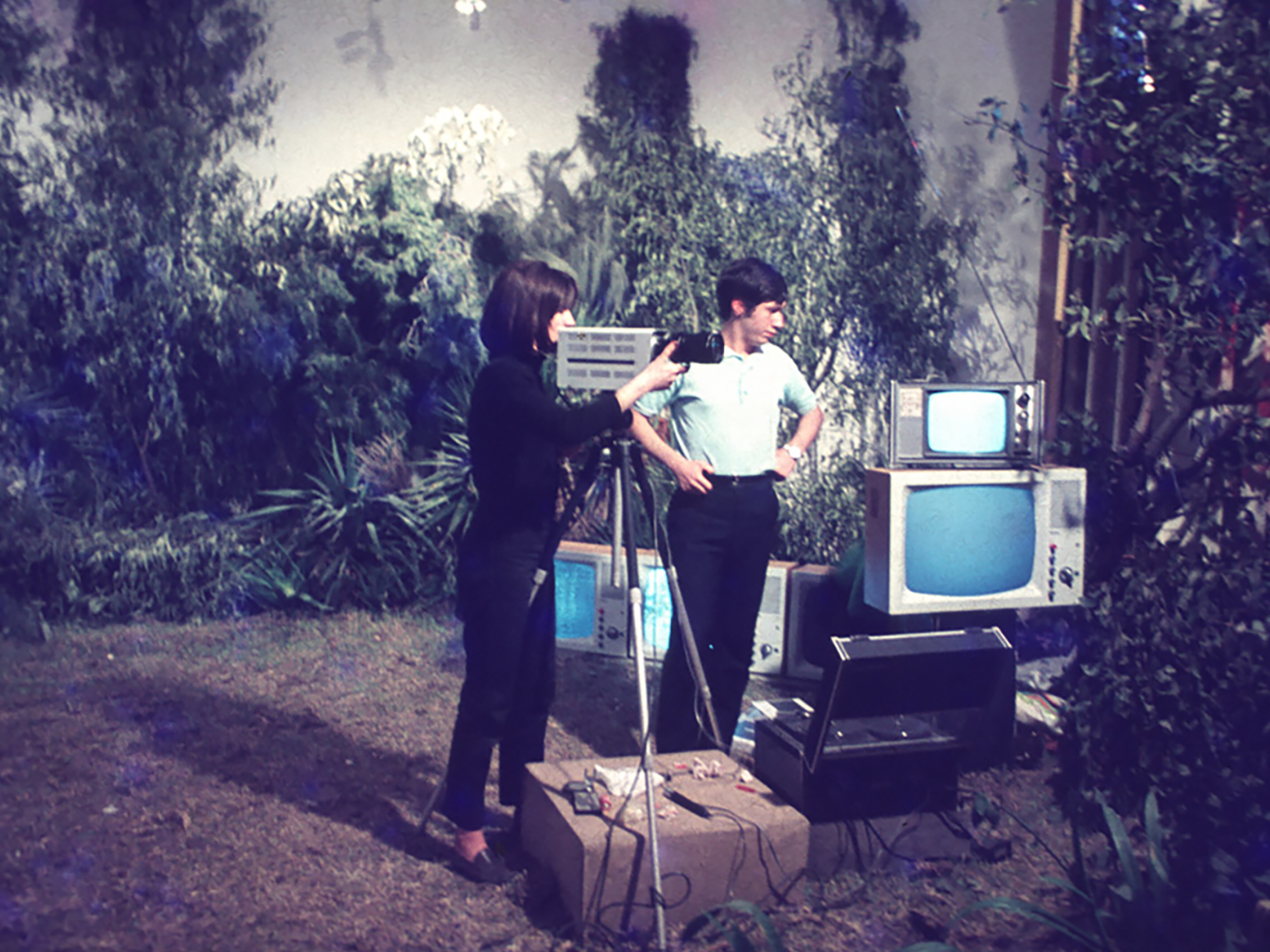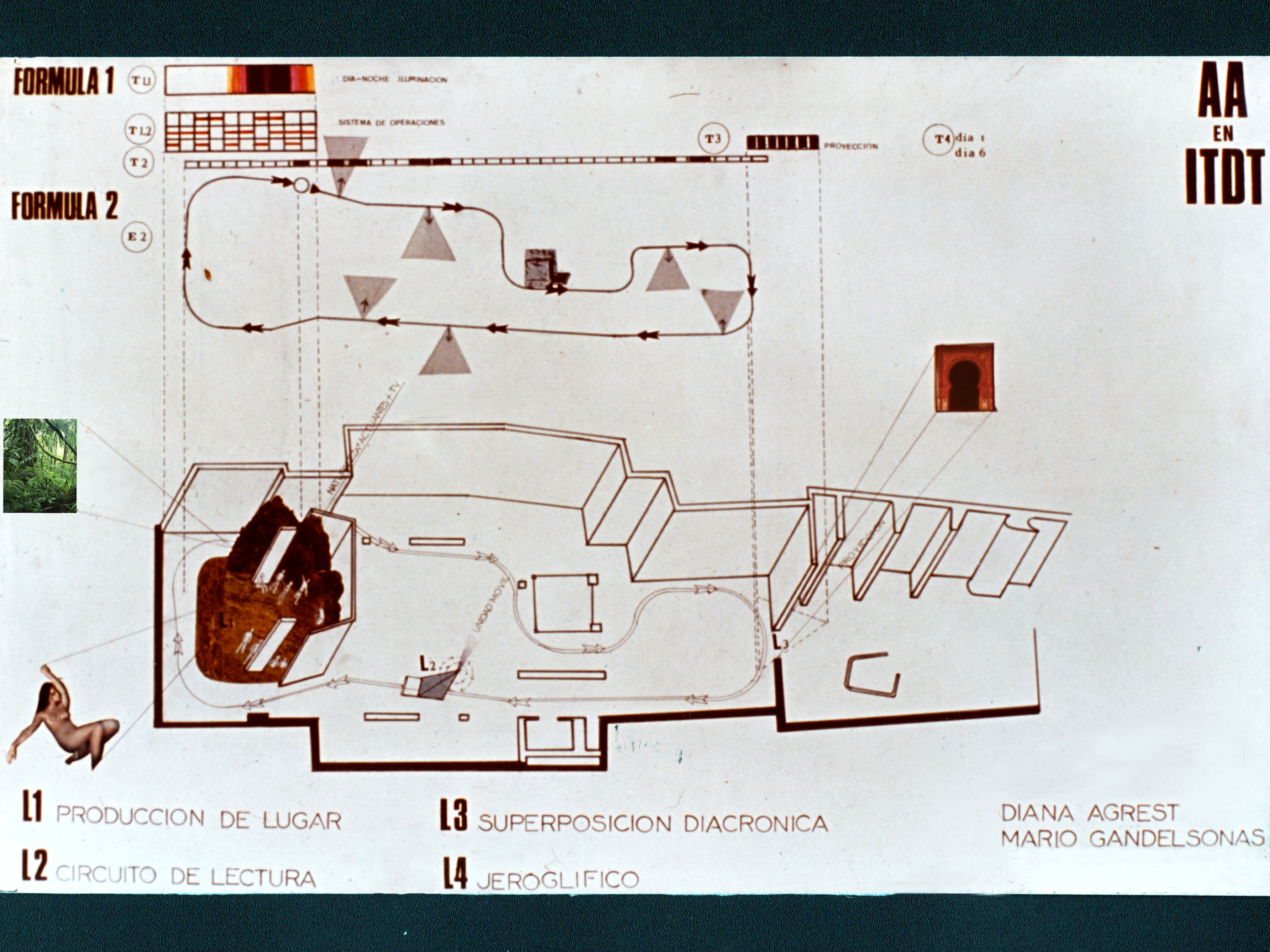Production of Place
Buenos Aires, Argentina
1969



The work of Production of PIace, presented at the Instituto Di Tella, Buenos Aires, October 1969, is one of the works which manifests and increases the distance produced by the historic break between the so-called architectonic production—surviving puppet of idealism—and the emerging of the concept of work on the social scene as can be taken today as the theoretical node of a state of symbolic transformation towards outside the traditional system of architecture. To precise this distance, this outside, to give them at the same time their function of break, of reconstruction and displacement of the referential axes constitutes the urgency of this tentative...
This passage, this mutation announces the profoundness and intensity of the architectural crisis in the interior of which we must work by necessity. In the same way as the relations of production are hidden in society, the artifices that make the social space one of signification are hidden by architecture.
This task is done in four different locations, and actions presenting four types of production of place.
Place as function (in the mathematical sense) within the dissolution of the traditional notion of space operating in architecture. The production of place that we call No 1 is our task of showing the artifices used by architecture to be able to organize a situation.
We present nature not as a regressive romanticism, but as residue to which we approach in order to be able to take a distance from a culture, to think, it and read it.
We think it is also important the effect produced': as indication of the possibility that as a dependent and peripheral country we have to realize this approaching, an advantage we have in relation to central countries. Instead of designing objects and forms we put people performing tasks. What is important is not the form of objects or spaces but the activities that people perform. This is what produces place.
People interact in two ways:
1. Performing a game built up on the bases of typical Argentinian games and
2. Elaborating on the basis of the rules functioning in their codes, new forms of combination implying new forms of relation.
This passage, this mutation announces the profoundness and intensity of the architectural crisis in the interior of which we must work by necessity. In the same way as the relations of production are hidden in society, the artifices that make the social space one of signification are hidden by architecture.
This task is done in four different locations, and actions presenting four types of production of place.
Place as function (in the mathematical sense) within the dissolution of the traditional notion of space operating in architecture. The production of place that we call No 1 is our task of showing the artifices used by architecture to be able to organize a situation.
We present nature not as a regressive romanticism, but as residue to which we approach in order to be able to take a distance from a culture, to think, it and read it.
We think it is also important the effect produced': as indication of the possibility that as a dependent and peripheral country we have to realize this approaching, an advantage we have in relation to central countries. Instead of designing objects and forms we put people performing tasks. What is important is not the form of objects or spaces but the activities that people perform. This is what produces place.
People interact in two ways:
1. Performing a game built up on the bases of typical Argentinian games and
2. Elaborating on the basis of the rules functioning in their codes, new forms of combination implying new forms of relation.
Production #1
Realizing working experiences with the TV production equipment, the only element extracted from the cultural repertory of objects. This technological instrument was chosen for two reasons:
a. It allows to shoot another type of place, that which is generated by the existence of a communication network as circuit, and
b. It is possible to start to present the possibilities of productive reaction of the receiver public in front of central seeders of the mass communication system, be it by recombining its images and messages or introducing in commercial programs images which are prepared there or commenting them through the same media. When necessary electronic equipment is there so that it is possible to achieve. In this way the people shift from consumers of untouchable external messages to producer of new forms of television material.